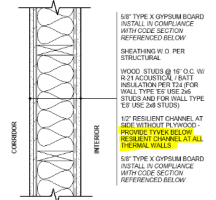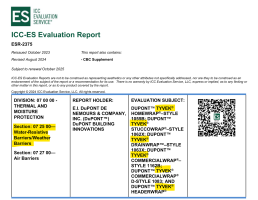Yikes
SAWHORSE
I recently saw this detail for an new apartment project - -it's the wall between the unit and the corridor, so it's one hour rated and also STC 50+ sound rated.
The corridors are open near the ends and so it is unconditioned, but these walls are far within the corridor and not directly exposed to rain.
Why would there be tyvek on the warm / interior face of stud, underneath the resilient channels? Is it some kind of thermal bridging thing?

The corridors are open near the ends and so it is unconditioned, but these walls are far within the corridor and not directly exposed to rain.
Why would there be tyvek on the warm / interior face of stud, underneath the resilient channels? Is it some kind of thermal bridging thing?


